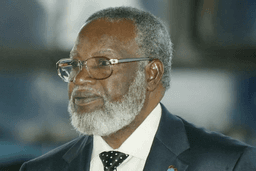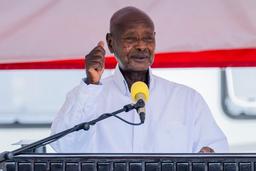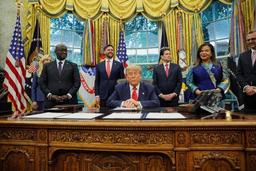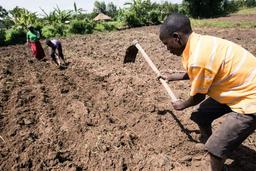Cameroon
Cameroon is a culturally and geographically diverse country in Central Africa, often called “Africa in miniature” for its variety of landscapes, languages, and traditions. It is home to over 250 ethnic groups and speaks both French and English as official languages. With lush rainforests, savannas, highlands, and coastal plains, Cameroon has a rich mix of natural beauty. Its economy relies on agriculture, oil, mining, and forestry, making it a key player in the region.


28 million

Central Africa

475,440 sq km

WAT, UTC+1

French, English

Central African CFA franc

Christianity, Islam

President Paul Biya
Brief
Cameroon is a country located in Central Africa, often referred to as "Africa in miniature" because of its cultural, geographical, and climatic diversity. It features coastal plains, mountains, forests, savannas, and desert landscapes. Early kingdoms such as the Kingdom of Sao and Kanem-Bornu flourished in the region. European contact began with Portuguese explorers in the 15th century, followed by German colonization in the late 19th century. After Germany’s defeat in World War I, Cameroon was divided between France and Britain under League of Nations mandates.
In 1960, French Cameroon gained independence as the Republic of Cameroon. A year later, part of British Cameroon joined it to form the present-day country. Cameroon has since been known for its political stability in a region often troubled by conflict, although it has faced tensions between its French-speaking majority and English-speaking minority.
The capital city is Yaoundé, while Douala is the largest city and main economic hub. Cameroon is rich in natural resources such as oil, timber, and minerals, and has strong agricultural production, especially in cocoa, coffee, and bananas. It is also known for its vibrant music (like Makossa and Bikutsi) and its national football team, the Indomitable Lions. Cultural sites and natural wonders include Mount Cameroon, Waza National Park, and the historic town of Foumban.
Photos




National Anthem
Cultural Life
Cultural milieu
Cameroon is a culturally diverse country shaped by its indigenous ethnic groups, colonial history, and trade. Originally home to Bantu-speaking peoples and Fulani herders, it has rich traditions in farming, crafts, and music. Portuguese explorers arrived in the 15th century, followed by German colonization in the late 1800s. After World War I, Cameroon was divided between French and British rule, leaving a lasting mix of French and English languages and systems.
Today, Cameroon blends its Francophone and Anglophone heritages with strong local traditions, expressed through festivals, music, and efforts to preserve indigenous cultures.
Daily life and social customs
Social life in Cameroon centers largely around family, community gatherings, and religious events. Many people enjoy spending time at local markets, neighborhood bars (known as bendskins or quartiers), or roadside eateries, which serve as common meeting spots, especially for men. Watching football (soccer), whether at home or in public places like bars and community halls, is one of the country’s most popular forms of entertainment.
In larger cities such as Douala and Yaoundé, social life includes going to cinemas, restaurants, nightclubs, and shopping at both modern malls and bustling markets where vendors sell traditional crafts, clothing, and food. Music and dance are important in Cameroonian social life, with live performances and street celebrations being common, especially during festivals.
Cameroon’s diverse landscape also offers many outdoor leisure options. In coastal cities like Limbe and Kribi, beaches are popular weekend destinations for families, who enjoy swimming, picnicking, and seafood. In the highland regions, people gather for hiking, nature tours, and cultural events.





Cuisine
Cameroonian cuisine is known for its rich diversity, reflecting the country’s many ethnic groups and regions. Meals often feature staple foods such as cassava, maize, plantains, rice, yams, and cocoyams. A popular dish is ndolé, a stew made from bitter leaves, peanuts, and meat or fish. Another well-loved meal is fufu, a starchy dough usually served with soups or sauces, such as eru, made with leafy greens, spices, and smoked fish or meat.
Grilled meats (often called soya or brochettes) are commonly enjoyed at roadside grills and gatherings. Fish is also widely eaten, especially in coastal areas, with dishes like grilled fish with spicy pepper sauce.
Cameroonians also enjoy a variety of spicy sauces and seasonings, with chili peppers playing a big role in many meals. Snacks such as puff-puff (fried dough balls) and beignets are popular street foods. Beverages include palm wine, millet beer, and soft drinks, though tea and coffee are also common in some regions.
Meals are often social events, bringing together family and friends, especially during festivals and celebrations.





Music
Cameroonian music is deeply influenced by the country’s cultural diversity, blending traditional African rhythms with modern styles. Traditional music often features instruments such as drums, balafons (wooden xylophones), flutes, and string instruments like the mvet (a harp-zither used by the Beti people). Percussion plays a central role in many local styles, with complex rhythms used in ceremonies and celebrations.
Popular music genres include makossa, an urban dance style from Douala that mixes African rhythms with jazz, highlife, and Latin music influences, and bikutsi, a fast-paced dance music with strong percussion and female vocals, rooted in the Beti culture. Globally known Cameroonian artists include Manu Dibango, famous for blending jazz and funk with African styles, particularly through his hit song “Soul Makossa,” and Richard Bona, a renowned jazz bassist and singer.
Today, younger Cameroonians also enjoy genres like afrobeats, hip-hop, coupé-décalé, and Congolese rumba, often fusing them with local rhythms to create fresh sounds.
Makossa
Description:
Makossa is the most internationally recognized music genre from Cameroon. Originating in Douala, it's a blend of traditional Cameroonian rhythms with funk, soul, and Congolese rumba. It gained massive popularity in the 1970s–90s.
Bikutsi
Description:
Bikutsi originates from the Beti people in central Cameroon, especially around Yaoundé. It’s highly percussive, featuring fast-paced rhythms and is often danced barefoot.
Afropop / Urban Music (Cameroonian Afrobeat & Hip-Hop)
Description:
In recent years, Cameroonian youth have embraced a mix of Afrobeats, hip-hop, and pop, blending them with local dialects and culture, creating a fresh modern sound.
The arts
Cameroonian literature is diverse, reflecting the country’s multilingual and multiethnic makeup. It includes works in English, French, and indigenous languages, often exploring themes such as colonialism, identity, tradition, and social change. Early literary works were mainly in oral traditions, such as folktales, proverbs, and epic poetry, which remain influential today.
Prominent Cameroonian writers include Mongo Beti and Ferdinand Oyono, known for their French-language novels critiquing colonialism and postcolonial issues. Bole Butake and John Nkemngong Nkengasong are well-known Anglophone playwrights and authors who focus on cultural identity and politics. Literature in Cameroon often blends oral storytelling with modern forms, and contemporary authors continue to explore current social and political challenges.





People
Ethnic groups
Cameroon is one of Africa’s most ethnically diverse countries, with over 250 ethnic groups. The largest groups include the Fang-Beti peoples in the central region, the Bamileke and Bamoun in the west, and various Fulani (Peul) communities in the north, known for their pastoral lifestyle. In the southern forests, Baka and other indigenous groups maintain traditional ways of life.
Many Cameroonians speak local languages alongside either French or English, the two official languages, reflecting the country’s colonial past. The coastal regions and large cities like Douala and Yaoundé are more ethnically mixed due to trade, migration, and urbanization.
Islam and Christianity are widely practiced, and traditional religious beliefs also remain significant, particularly in rural areas. Social identity in Cameroon is often closely tied to ethnic group, language, and region, making cultural diversity a central part of national life.

Religions
Cameroon has a highly diverse religious landscape. Christianity is the dominant religion, with the majority of Cameroonians identifying as either Roman Catholic or members of Protestant churches, including Baptist, Presbyterian, and Evangelical groups. Christianity is especially strong in the southern and western regions.
Islam is also widely practiced, particularly in the northern regions, where the Fulani population is predominantly Sunni Muslim. Islamic traditions here often blend with local customs, and religious leaders, such as imams and lamidos (traditional rulers), hold significant influence.
Traditional indigenous religions are practiced throughout the country, especially in rural areas. These belief systems often center around ancestral worship, spirits, and nature, and are sometimes blended with Christianity or Islam.
Religious freedom is officially protected, and the major faiths generally coexist peacefully, although occasional tensions arise in some regions.

Settlement patterns
Settlement patterns in Cameroon are shaped by its varied geography, which includes coastal plains, highlands, savannas, rainforests, and northern semi-arid regions. The western highlands and central plateau are among the most densely populated areas, home to large farming communities such as the Bamileke and Bamoun, who practice intensive agriculture.
The coastal areas around Douala and Limbe are major urban and trade centers, with bustling ports and industries. In the northern regions, settlements are more scattered due to the drier climate; here, communities focus on livestock herding and subsistence farming. The southern rainforest zone is sparsely populated, with small villages relying on hunting, fishing, and small-scale farming.
Agriculture is the backbone of rural life, with key crops including cassava, maize, millet, plantains, cocoa, and coffee. Urbanization is steadily increasing, with many people migrating to cities in search of jobs and services.

Linear Settlement Pattern
- Description: Houses and buildings are arranged in a line, often along roads, rivers, or valleys.
- Example in Cameroon: Found in areas like along the Bamenda–Mamfe road, where communities develop close to transport routes for trade and access.

Clustered (Nucleated) Settlement Pattern
- Description: Homes and infrastructure are grouped closely together, often around a central feature like a market or community center.
- Example in Cameroon: Bamenda and Bafoussam, where people live close together for social, security, or economic reasons.

Dispersed Settlement Pattern
- Description: Houses and farms are spread out over a large area, with significant distance between dwellings.
- Example in Cameroon: In parts of the Adamawa and Far North regions, especially in pastoral or agricultural zones.
Demographic trends
Cameroon’s population is growing steadily, in line with trends across sub-Saharan Africa. The country has a relatively young population, with a large proportion under age 15, creating high demand for education and jobs. Most of the population lives in the more fertile western highlands, central plateau, and coastal regions, where agriculture, trade, and industry are concentrated.
Urbanization is increasing rapidly, with major cities like Douala and Yaoundé drawing many migrants from rural areas in search of work and better living conditions. However, rural-to-urban migration has also placed pressure on city infrastructure and housing.
While emigration to Europe and other parts of Africa exists, it has not been on the same scale as in North African countries. Many Cameroonians migrate internally or to neighboring countries for work, particularly in agriculture, mining, and trade.

Touristic Cities
Douala City
- Role: Economic Capital of Cameroon
- Description:
Douala is the largest and most economically important city in Cameroon. Located on the Atlantic coast, it's home to the country's busiest port and the hub of commerce, industry, and international business. It's vibrant and fast-paced, with a mix of modern and traditional culture.
Yaoundé
- Role: Political and Administrative Capital
- Description:
Yaoundé is the seat of government and one of Africa's cleanest capitals. Set among scenic hills, it's known for its organized layout, diplomatic presence, and cultural institutions. It offers a more peaceful and greener environment compared to Douala.
Buea
- Role: Academic and Historical Center
- Description:
Located on the slopes of Mount Cameroon, Buea is known for its cooler climate, colonial history, and the University of Buea. It's a key city in the English-speaking Southwest region and popular for hiking, tourism, and academic life.
Accomodation
Guest houses
Guest houses in Cameroon offer a warm and welcoming stay, reflecting the country’s rich cultural diversity. Whether in cities like Douala and Yaoundé or near scenic spots like Bamenda and Kribi, these places provide a cozy, home-like atmosphere.
Many guest houses are family-run, allowing visitors to experience local traditions, enjoy homemade meals, and connect with Cameroonian hospitality—all at affordable prices.




Hotels and Resorts
Hotels in Cameroon range from luxury establishments in major cities like Douala and Yaoundé to comfortable mid-range and budget options across the country. Many hotels cater to business travelers and tourists, offering modern amenities such as Wi-Fi, conference facilities, and restaurants serving both local and international cuisine.
In popular tourist areas like Kribi and Limbe, beachfront resorts provide relaxing stays with beautiful ocean views. Hotels often blend modern comfort with touches of Cameroonian culture, making them ideal bases for exploring the country.




Campings
Camping in Cameroon offers an adventurous way to experience the country’s diverse landscapes—from lush rainforests and scenic highlands to beautiful beaches. Popular camping spots include national parks like Waza, Kakum, and areas around Mount Cameroon, where visitors can enjoy wildlife watching and hiking.
Campsites range from basic, rustic sites to more organized eco-lodges that provide some comforts while keeping you close to nature. Camping is a great option for travelers seeking outdoor adventure and a deeper connection with Cameroon’s natural beauty.




Requirements for Visa
Documents to be submitted for your application
- Completed and signed visa application form.
- Two recent passport-size photographs on a white background, showing your full face clearly.
- Valid passport with at least six months’ validity beyond your intended stay and at least two blank pages.
- Photocopy of the passport’s data page.
- Proof of accommodation in Cameroon (hotel reservation or invitation letter from a host).
- Return or onward travel ticket.
- Proof of sufficient funds to cover your stay (bank statements, sponsorship letter).
- Yellow fever vaccination certificate (mandatory for entry into Cameroon).
- Letter of invitation from a host in Cameroon (if applicable), legalized by the Cameroonian authorities.
- Additional documents such as travel itinerary or employment letter may be requested depending on the visa type.
At the time of visa issuance, please provide the following documents
- Return ticket with confirmed reservation.
- Travel insurance covering the duration of your stay.
- Hotel booking confirmation, or an introduction letter / voucher from your host.
- Payment of chancery fees (visa processing fees).
Economy of Cameroon
Agriculture, forestry, and fishing
Cameroon is rich in natural resources and has strong agricultural potential due to its diverse climate and fertile lands. The country has large areas suitable for farming, especially in the western highlands, central regions, and coastal plains.
Key crops include cocoa, coffee, cotton, bananas, palm oil, maize, cassava, and plantains—many of which are major export products, particularly cocoa and coffee. Cameroon is also expanding its production of rice, potatoes, and soybeans to boost food security.
Livestock farming is widespread, with cattle, sheep, goats, and poultry raised across the country, especially in the northern regions. Fishing is also important in coastal areas and around inland lakes.
In addition to farming, Cameroon has significant forestry resources and is one of Africa’s largest producers of timber. The country also holds mineral resources such as oil, gas, bauxite, iron ore, and gold, although these remain underdeveloped in some regions.
Agriculture remains the backbone of Cameroon’s economy, providing employment for a large part of the population.

Resources and power
Cameroon is endowed with various mineral resources, though many remain underdeveloped. Key minerals include bauxite, iron ore, gold, and diamonds, with bauxite deposits among the largest in Africa. Small-scale mining of gold and diamonds is common, particularly in the eastern region.
The country also has oil and gas reserves, mainly located in its coastal regions, making petroleum one of Cameroon’s top exports. However, fluctuations in global oil prices often affect production and government revenue.
Forestry is another major resource, with Cameroon among Africa’s leading exporters of timber, though concerns about deforestation persist.
In terms of energy, Cameroon has significant hydroelectric potential due to its many rivers and dams, supplying much of the country’s electricity. Despite this, some areas—especially in rural regions—still face energy shortages. Thermal power plants and small-scale solar projects help to supplement the national power supply.

Manufacturing
Manufacturing in Cameroon plays an important role in the economy, contributing a growing share of GDP. The sector mainly focuses on processing raw materials for export and producing consumer goods for the domestic market. Much of Cameroon’s industrial activity has roots in the colonial era.
Key industries include food processing—such as cocoa, coffee, cotton, palm oil, and sugar—with products made for both local consumption and export. Textile manufacturing using local cotton is also significant, along with timber processing, which supports the country’s strong forestry sector.
Cameroon has focused on privatization and attracting foreign investment since the 1990s, shifting away from earlier government-led models of import substitution. However, industrial growth is sometimes slowed by infrastructure challenges, especially in transportation and energy.
Though steel and metalworking industries remain small, they provide essential materials for the local market.

Finance
Cameroon’s banking system is overseen by the Bank of Central African States (BEAC), which serves as the central bank for the Central African Economic and Monetary Community (CEMAC). It issues the Central African CFA franc and manages the region’s foreign currency reserves. BEAC also regulates credit, supervises commercial banks, and oversees monetary policy within the CEMAC zone.
Cameroon’s financial sector includes several commercial banks, microfinance institutions, and development banks. Efforts to modernize the sector and expand financial inclusion have led to growth in digital banking and mobile money services.
The Douala Stock Exchange (DSX), established in 2001, is Cameroon’s official securities market, although trading remains limited, mainly involving shares of a few large companies and government bonds.

Trade
Cameroon has made efforts to boost exports and manage imports to improve its trade balance, though trade deficits still occur frequently. The country’s main exports include oil and petroleum products, cocoa, timber, coffee, and cotton. These commodities remain key sources of foreign exchange.
Major imports include machinery, electrical equipment, transport equipment, refined petroleum, food products, and chemical goods. China, France, Nigeria, and the Netherlands are among Cameroon’s largest trading partners, with trade relations focused on both exports and imports.
Cameroon is a member of several regional trade organizations, including CEMAC (Central African Economic and Monetary Community) and AfCFTA (African Continental Free Trade Area), aiming to improve regional trade. While its trade remains somewhat dependent on traditional partners, the government continues to explore new trade agreements and regional integration to diversify its markets.

Labour and taxation
In Cameroon, a large portion of the population works in agriculture, which remains the country’s biggest employer, engaging about half of the workforce. Others are employed in industry, including mining, manufacturing, and construction, while the trade, services, and financial sectors employ a growing segment of workers, particularly in urban areas.
However, the country has a large informal economy consisting of street vendors, artisans, domestic workers, and small traders, many of whom face low and unstable incomes. Unemployment and underemployment remain major issues, especially among youth and graduates with non-technical degrees.
Several trade unions operate in Cameroon, with the most prominent being the Confederation of Cameroon Trade Unions (CSTC). Government revenue mainly comes from taxes on income, goods and services, petroleum products, and imports, which are crucial for financing public spending.

Transportation and telecommunications
Cameroon’s transport network connects its diverse regions, though some areas remain difficult to access due to challenging terrain and seasonal weather. The road network is the main mode of transport, with major highways linking Douala, Yaoundé, Garoua, and other cities. Roads built during the colonial period have been expanded and partially modernized, but maintenance remains a challenge in rural areas.
The railway system, operated by Camrail, connects the port city of Douala with inland cities such as Yaoundé and Ngaoundéré, serving both freight and passenger traffic. However, the railway network is limited compared to road transport.
Cameroon has several ports, with Douala being the largest and most important, handling the bulk of imports and exports. The smaller Kribi deep-sea port has also grown in importance for heavy goods and mining exports.
The country is served by several airports, with Douala International Airport and Yaoundé Nsimalen International Airport as the main hubs for international and domestic flights.
Telecommunications have expanded significantly since the 2000s, driven by mobile phones and Internet services. Several providers, including MTN Cameroon and Orange Cameroon, offer mobile, Internet, and mobile money services. Access to the Internet has improved, especially in urban areas, with widespread use of cyber cafés and increasing home connections. However, connectivity in rural regions remains limited.

Telecommunication Networks


Latest News in Cameroon
Politics
The first president of independent Namibia, Sam Nujoma, has died at the age of 95 in the capital Windhoek, the country's current leader has announced.
Politics
Ugandan President Yoweri Museveni has officially announced his intention to seek re-election in the 2026 presidential race, extending his nearly four-decade rule. Museveni, who has been in power since 1986, is once again positioning himself as the steady hand guiding Uganda through challenges. His decision has sparked mixed reactions, with supporters praising his leadership and longevity, while critics call for fresh leadership and political reform. As the nation looks ahead to the 2026 elections, Uganda braces for a heated political contest.
Politics
Peace Agreement with DRC Rwanda and the Democratic Republic of Congo (DRC) signed a U.S.-brokered peace deal aimed at ending conflict and promoting regional trade. Rwanda agreed to stop supporting armed groups like M23 rebels, though it denies involvement. Tensions remain, and President Kagame is cautious about whether the peace will last.
Wildlife
Tanzania has announced that all foreign tourists visiting Mainland Tanzania will be required to purchase a mandatory travel insurance policy upon arrival, beginning January 2026. The new regulation, issued by the Ministry of Finance on July 4, 2025, is part of the government reforms in the country’s 2025/26 financial year agenda. According to the notice, the measure will apply to all non-citizens, with the exception of visitors from countries that are part of the East African Community (EAC) and the Southern African Development Community (SADC). Citizens from these regions will continue to be exempt from the requirement.
Environment
In light of the growing food insecurity crisis across many African nations, heads of state and agriculture experts gathered in Nairobi, Kenya, this week to discuss solutions to address food shortages, especially in regions severely affected by climate change, political instability, and economic challenges. The two-day summit, titled “Agriculture and Climate Resilience: A Pan-African Strategy”, brought together government officials, NGOs, scientists, and international organizations to create a comprehensive strategy to improve agriculture, nutrition, and sustainable food systems across the continent.
Tech & Science
In 2025, Artificial Intelligence (AI) isn’t just a futuristic buzzword - it’s the secret weapon behind some of the world’s most successful content creators. From bloggers and YouTubers to podcasters and marketers, AI-powered tools are changing the way we brainstorm, write, design, and edit. If you've ever struggled with writer’s block, lacked design skills, or wished for faster content creation - AI might be your best assistant yet. Here’s how AI is revolutionizing the creative industry and how you can use it to boost your projects.





